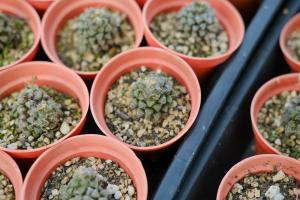A Plant Cell When Initially Placed in Pure Water
When a plant cell is initially placed in pure water, it undergoes several changes due to the process of osmosis. Osmosis is the movement of water molecules from an area of higher water concentration to an area of lower water concentration, across a selectively permeable membrane. In the case of a plant cell, the selectively permeable membrane is the cell wall and the cell membrane. Here is what happens to a plant cell when it is placed in pure water:
The Process of Osmosis in a Plant Cell
When a plant cell is placed in pure water, the water molecules start moving from the area of higher water concentration (in the pure water) to the area of lower water concentration (in the plant cell). This movement of water continues until the water concentration becomes equal on both sides of the membrane. This process of osmosis causes the plant cell to undergo several changes, which are discussed below.
The Plant Cell Swells Due to Uptake of Water
As the water molecules move into the plant cell, the cell starts to expand and swell up. This is because the cell wall is rigid and cannot stretch easily, so the only way for the cell to accommodate the extra water volume is to expand in size. This increase in size is visible under a microscope and is often used to study the effects of osmosis on plant cells.
The Cell Wall Prevents the Plant Cell from Bursting
As the plant cell swells up due to the uptake of water, it exerts pressure on the cell wall. However, the cell wall is strong enough to prevent the cell from bursting. The plant cell can keep taking up water until it reaches a point where the pressure on the cell wall is equal to the turgor pressure inside the cell.
Plasmolysis in a Plant Cell
If the plant cell is placed in a hypertonic solution (a solution with a higher solute concentration than the cell), the opposite process of osmosis occurs. In this case, water moves out of the cell, causing it to shrink and shrivel up. This process is called plasmolysis and can be harmful to the plant cell if it continues for an extended period of time.
The Importance of Osmosis in Plant Cells
Osmosis is a vital process for plant cells as it helps them maintain their shape and structure. The ability of the cell wall to prevent the cell from bursting is due to the process of osmosis. Additionally, osmosis is responsible for the transport of water and nutrients from the roots to the rest of the plant. Without osmosis, plants would not be able to survive and thrive.
Conclusion
When a plant cell is initially placed in pure water, it undergoes several changes due to the process of osmosis. The uptake of water causes the plant cell to swell up, but the cell wall prevents it from bursting. Osmosis is a vital process for plant cells as it helps them maintain their structure and transport essential nutrients. Further research on osmosis can help us understand more about the functioning of plant cells and the importance of water for plants.

 how many times do yo...
how many times do yo... how many planted tre...
how many planted tre... how many pine trees ...
how many pine trees ... how many pecan trees...
how many pecan trees... how many plants comp...
how many plants comp... how many plants can ...
how many plants can ... how many plants and ...
how many plants and ... how many pepper plan...
how many pepper plan...































